Water leakage is every Indian home’s unwelcome guest. With India being a humid and tropical country, the monsoon season and the land’s perennial moisture may lead to wall water leakage at times in residential spaces. However, we are here with a proven formula that can deal with water leakage in walls. Step one is to identify the water leakage and its source. Followed by step two, which is to understand the cause of this wall water leakage and assess it, whereas step three is to prepare the victim wall and repair the water leak. So, the wall leakage solution that you can swear by is - Identify, assess, detect and repair. If you’re wondering how expensive and cumbersome this task seems, then let us burst your bubble. Wall leakage solutions are easy to implement and inexpensive as well, if done rightly.
In this blog, we help you understand the prevention and repair techniques with regards to water leakage in walls
What Causes Water Leakage in Walls?
There are common causes for water leakage in walls, especially in residential spaces. Let us list down a few common causes of wall water leakage that homeowners may come across. This can give you a starting point to identify and go into detective mode.
-
Faulty Plumbing
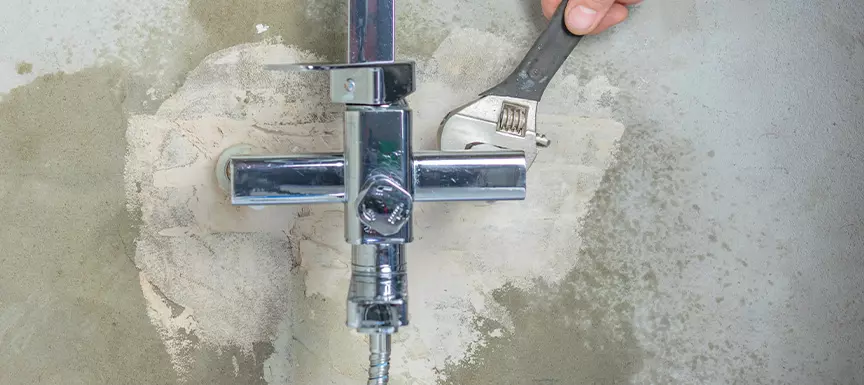 Faulty Plumbing
Faulty Plumbing
Faulty internal plumbing can be one of the most common causes of an internal leak. This can happen due years of wear and tear, corrosion, defective sealants etc. A faulty plumbing can cause water to seep through the walls and cause water leakage in walls.
-
Low Quality Paint Work
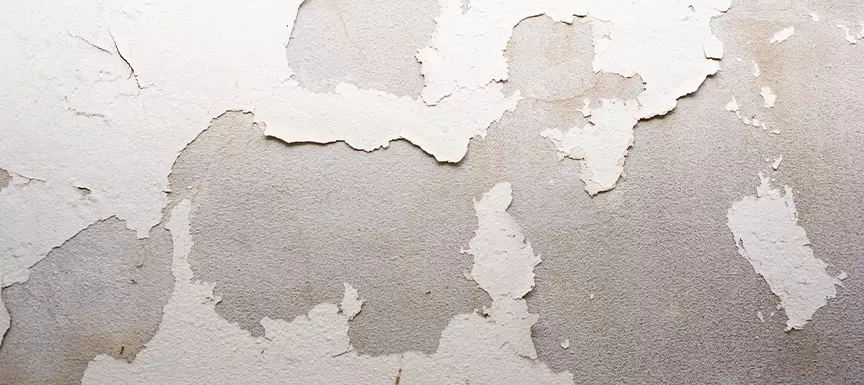 Low Quality Paint Work
Low Quality Paint Work
Low quality paints cannot endure the humidity and condensation that occurs within walls, thus causing the pain to peel off and give an opening to your leak. While peeling off the paint will also look very unattractive and leave a distasteful stain in your walls.
-
Leakage in the Neighbouring Property
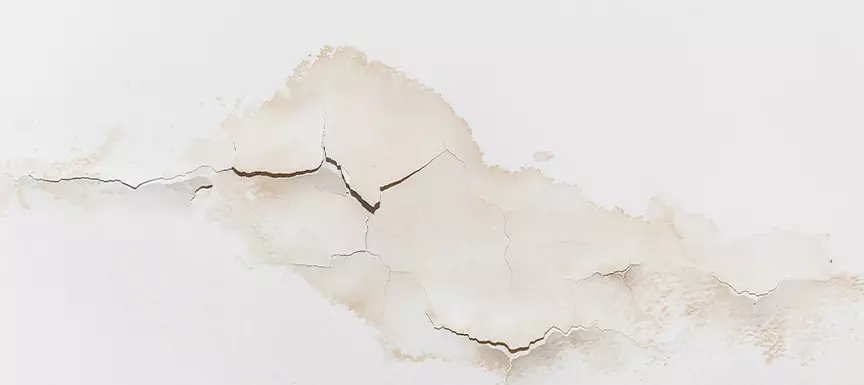 Leakage in the Neighbouring Property
Leakage in the Neighbouring Property
Oftentimes it so happens that a leakage that occurs in neighbouring properties can cause wall water leakage in our homes as well. This can happen when the primary leak is ignored hence causing the wall leakage to seep through and cause leakage in our walls as well.
-
Leakage from Pipes
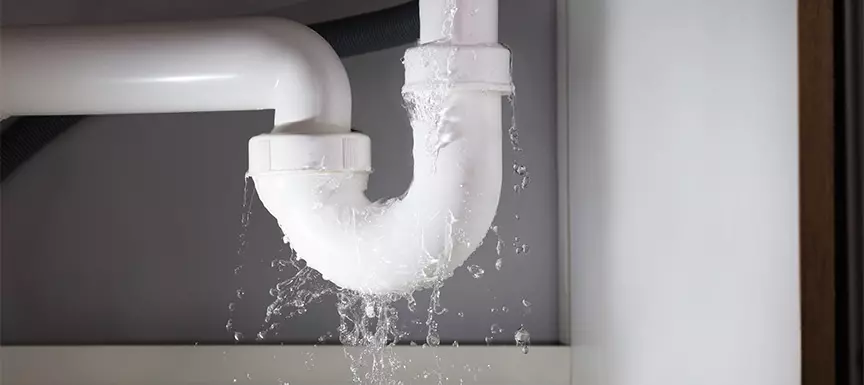 Leakage from Pipes
Leakage from Pipes
Sometimes when our pipes are damaged or defective, the leaks can make their way to the walls of our homes. Damaged pipes can be due to various reasons, such as cracks, wear and tear, rust, etc. Pipes should be thoroughly maintained to avoid such wall water leakage.
Also read: What is weatherproof paint?
How To Identify The Source of a Wall Leak?
Wall water leakage is a menace in a lot of homes, however, if identified early, can be repaired with various wall leakage solutions. Here are a few ways you can use this blog as a wall water leakage detector to identify the leaks and repair them before severe damage occurs.
-
Puddles of Water Near a Wall
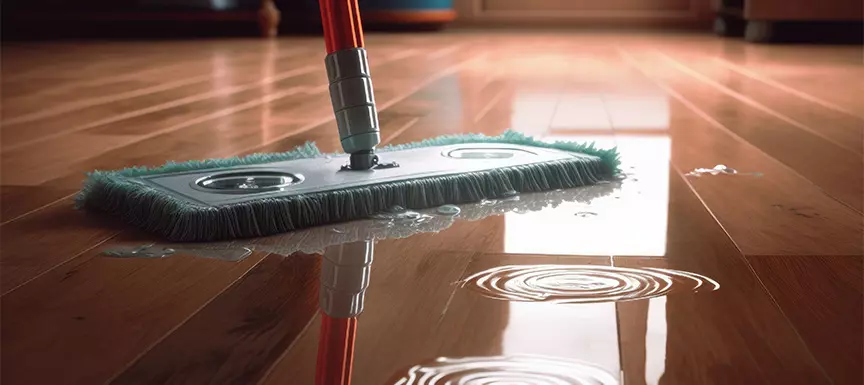 Puddles of Water Near a Wall
Puddles of Water Near a Wall
If you notice random puddles of water near your walls, it is likely that there is a wall water leakage problem in your home. It so happens that as the leak drips, it will accumulate a puddle near the source of the leak. This random puddle will be your first telltale sign that there is a water leakage in the walls of your home. If you notice these puddles, it is advised immediately that you check further for the leak to avoid water damage to your walls.
-
Discolouration on Walls
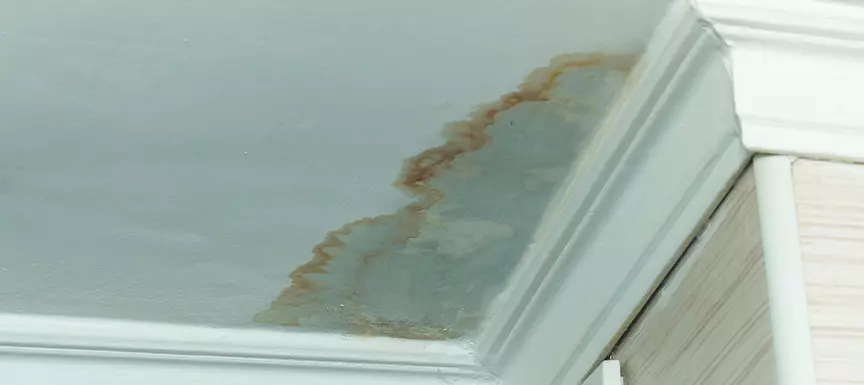 Discolouration on Walls
Discolouration on Walls
Water stains can often wear down the paints on your wall and cause an unattractive stain to appear on your walls. This stain is an indicator that water is seeping through your walls and creating a water leakage in your walls. The stain can leave an unpleasant and uneven look to the wall and also peel off the paint work making the space look damaged. If you notice a stain or any discolouration in your walls it is likely that your home is suffering from a wall water leakage problem.
-
Musty Odour
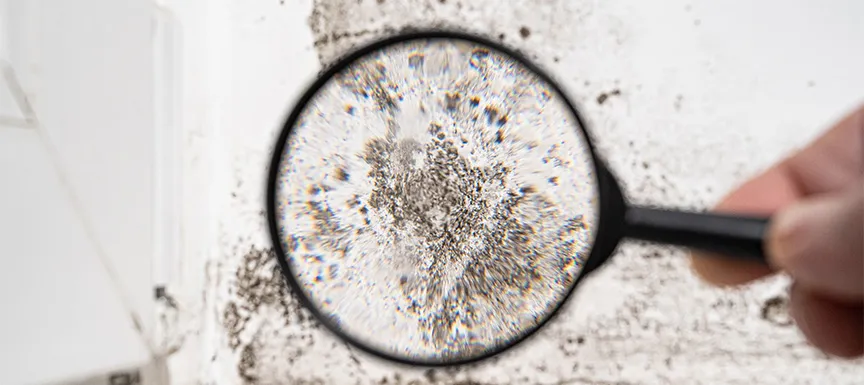 Musty Odour
Musty Odour
Stagnant water can grow a distasteful odour. A musty smell around your walls is a common indicator of water leakage in walls. This smell is caused by water remaining in space and slowly developing bacteria. A musty odour acts as a warning sign that water leakage has occurred in your walls and needs to be repaired immediately to prevent further damage to your property.
-
Mould or Mildew
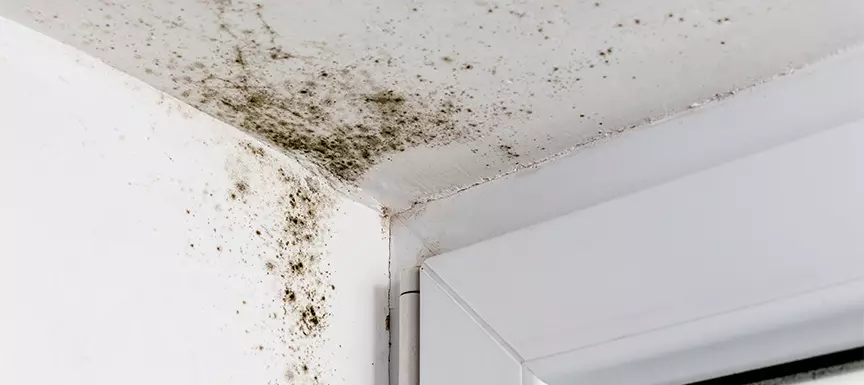 Mould or Mildew
Mould or Mildew
Mould or mildew are fungi that grow due to excessive exposure to water.these fungi can grow around and on your walls if there is a persistent water leakage in the walls of your home. The development of mould or mildew demands the immediate attention of homeowners as it indicates a serious water leakage problem and requires immediate waterproofing solution.
-
Texture on Walls
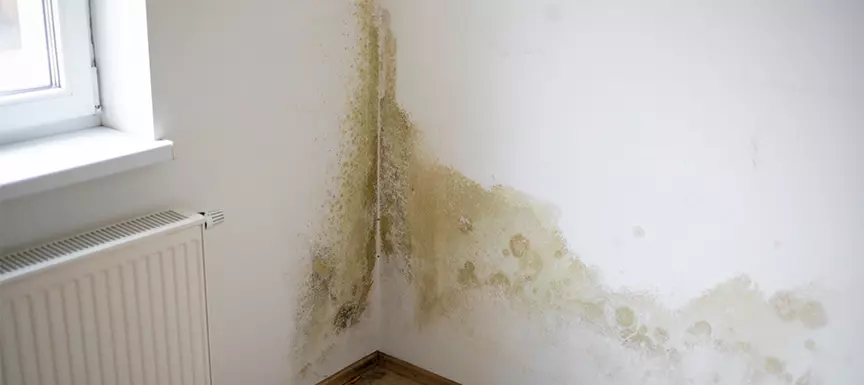 Texture on Walls
Texture on Walls
When paint work peels off it leaves scarpes of paint behind, which creates a texture on your walls. If you witness texture on your walls, it could likely be facing a water leakage problem. This texture can act as a water leakage detector to identify the area closest to the source of the water leakage in the walls of your home.
Troubleshooting Methods for Different Types of Water Leaks
Troubleshooting essentially means to trace and correct faults. In this blog, we will discuss various ways of troubleshooting methods to fix different types of water leaks.
There are various reasons why water leakage in walls can appear, as discussed above. Likewise, there are multiple ways you can attempt to correct wall water leakage. Some of them are listed to below,
-
Water Seepage Treatment
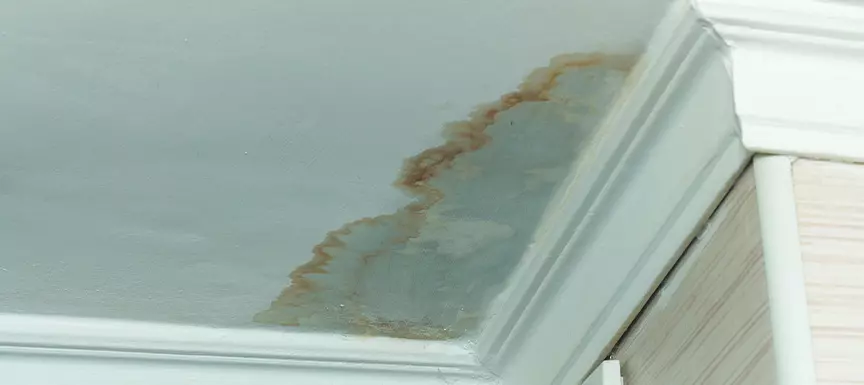 Water Seepage Treatment
Water Seepage Treatment
When correcting wall water leakage, one must keep in mind that walls of different rooms will require different wall water leakage solution. The first step to troubleshooting is identifying the leak, once you have done that you can use leakage treatments to repair the damage. However, it is essential to note that repairs are best made when the area is dry, and if a treatment is applied to a wet area, it may cause the damage to reappear.
-
Water Resistant Paints
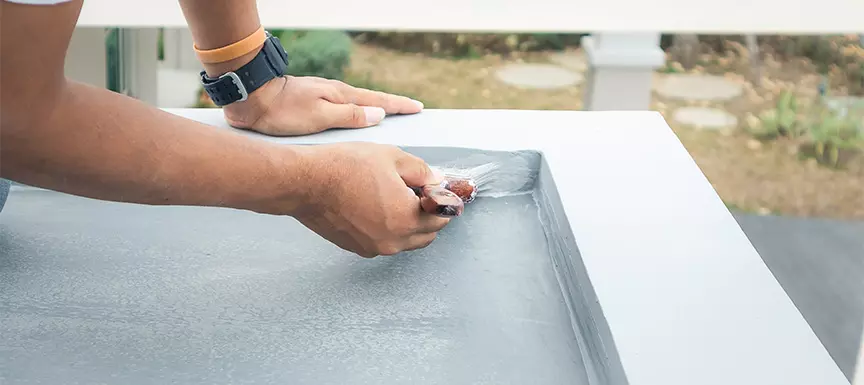 Water Resistant Paints
Water Resistant Paints
Wall water leakage detection once made can be fixed through various ways, one of them being the use of water resistant paints. Paintwork is usually where the first signs of wall water leakage appear, and it is the most easy thing to break through. This is why experts recommend water resistant paints that can endure the intensive moisture and humidity while also making your home look pleasant.
-
Reapplying Plasters
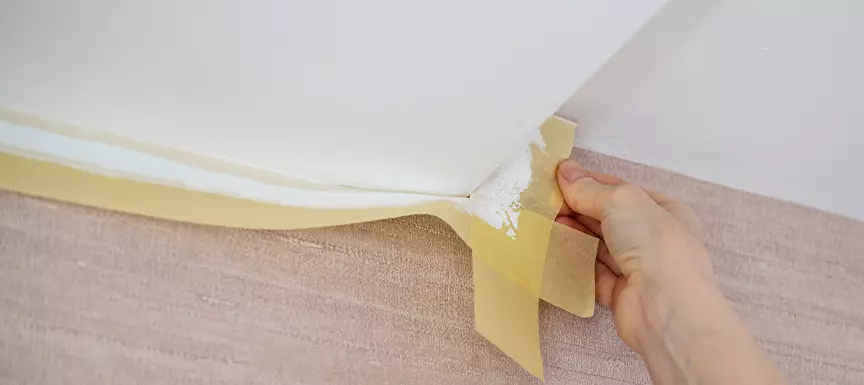 Reapplying Plasters
Reapplying Plasters
Using plasters that are water resistant is one of the best choices a homeowner can make. In case of severe water leakage damage, one can also choose to reapply the plaster materials and avoid the seepage. This ensures that the space remains dry and if used with cement or any other water resistant plaster materials, it can keep your home safe from wall water leakage.
-
Building Cavity Walls
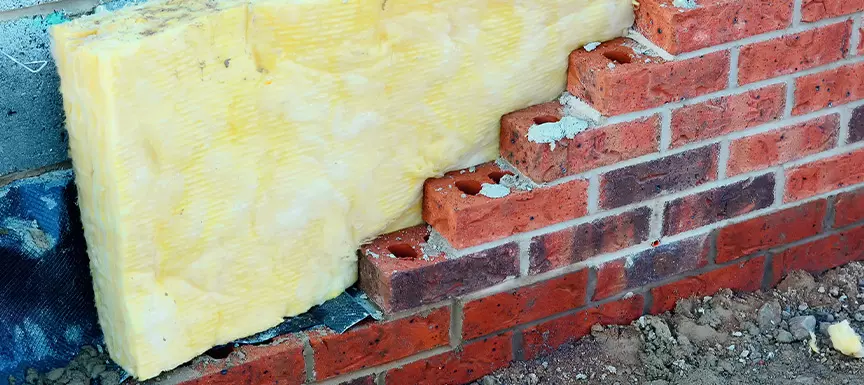 Building Cavity Walls
Building Cavity Walls
Cavity walls are two parallel walls that have a gap or a cavity between them that prevents the moisture from travelling. These can be highly effective to correct wall water leakage damage and can help make sure that your property remains undamaged.
Preparing Your Wall for Repair
Water leakage in walls one detected has to be repaired. There are few steps you must take to prepare the damaged wall for repair. These steps are to ensure that the fix remains strong and is not susceptible to water leakage in walls again. There are few primary steps to take to prepare your wall for repair.
-
Clean The Area
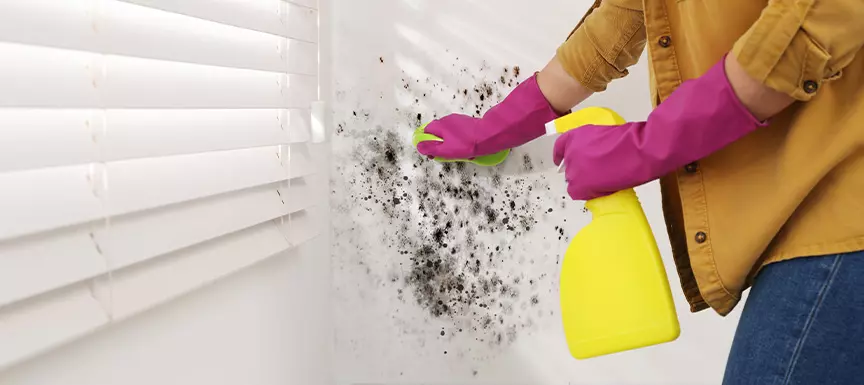 Clean The Area
Clean The Area
The first step to preparing your wall for wall leakage solution is to clean the wall leakage damaged area. It is essential that you clean the wall before starting the repair process and clear the area of any remnants of the damage, like scrapes, water, etc.
-
Dry The Wall
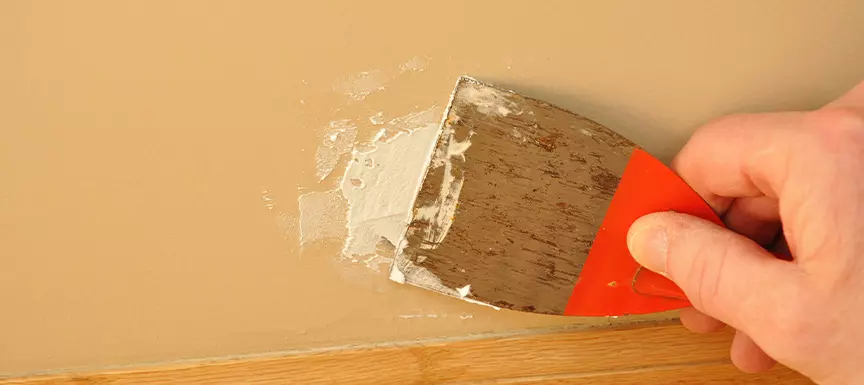 Dry The Wall
Dry The Wall
It is absolutely a must for the damaged area to be dry before the repair process begins. Along with keeping the area clean, this is must to ensure seamless repairs to walls that were damaged water leakage in walls.
-
Stop The Source of The Leak
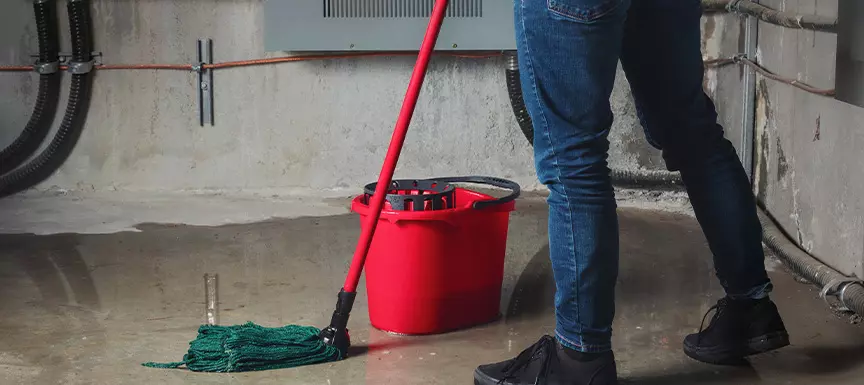 Stop The Source of The Leak
Stop The Source of The Leak
It is very important to make sure you curb the leak before starting the repair
process. If the leak is left unattended, it can cause water damage to the new repair job as well, and create more water damage to your property.
Step By Step Guide to Repairing a Water Leak
-
Locate The Leak
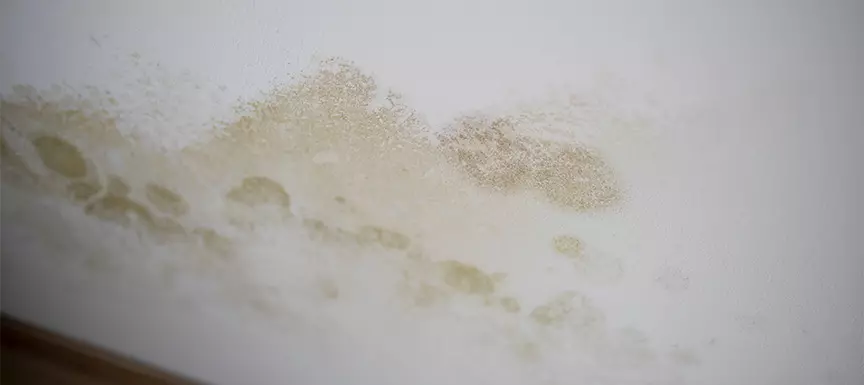 Locate The Leak
Locate The Leak
The first step to repair a water leakage in walls is to detect the leak. Once the wall leakage is identified, it will become quite easy to follow the rest of the steps. This is the foundation of any and all repairs.
-
Turn Off The Water Supply
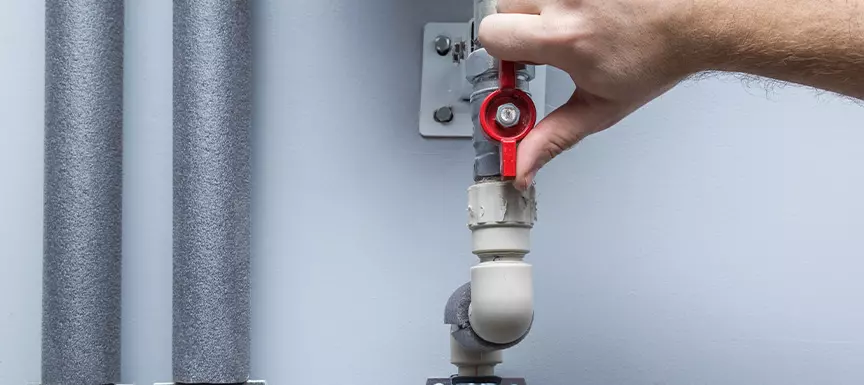 Turn Off The Water Supply
Turn Off The Water Supply
The next step to repairing a water leakage in walls is to turn off the water supply of your home to ensure that the seepage does not persist and cause more damage. Once you do this, it will be fairly easy to analyse the problem and create a repair plan.
-
Dry and Clean Up The Space
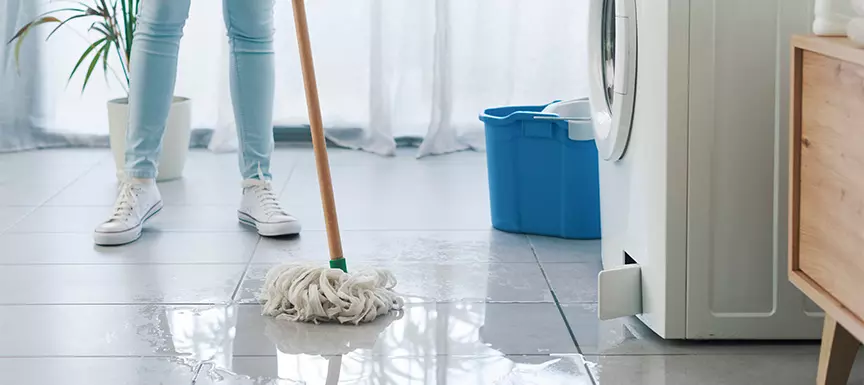 Dry and Clean Up The Space
Dry and Clean Up The Space
Once you have curbed and analysed the problem, the next step is to make sure your wall is prepped for the repair. Water Leakage solutions are quite the tricky process and if applied to the damaged area without cleaning and drying, can fall through very quickly. This will create resource wastage and can even cause more damage, hence it is necessary to clean and dry up the damaged area to repair the damaged wall.
-
Apply A Sealant to Temporarily Stop The Leak
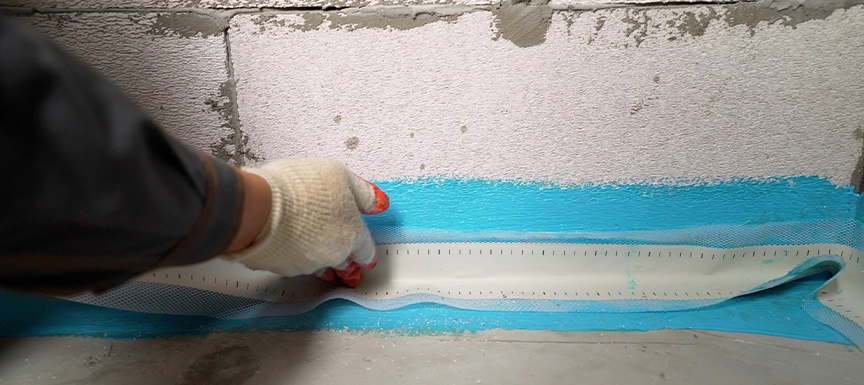 Apply A Sealant to Temporarily Stop The Leak
Apply A Sealant to Temporarily Stop The Leak
There are various types of sealants available in the market to hold off leaks and drips. However, these sealants only act as temporary fixes to the wall water leakage and can hold off the seepage for a while before falling through, thus it is essential that this step is taken prior to seeking professional assistance to curb the leak once and for all.
-
Seek Professional Assistance
Wall water leakage is a pretty extensive problem; thus the water leakage solution is also equally extensive. The repairs are tricky and need to be done by professionals to ensure they stick. Professional assistance is the ideal final step to repair and fix a wall leakage.
Also read: Find The Perfect Waterproofing Solution For Your Roof
Tips on Preventing Future Leaks
There are various ways one can avoid water leakage in walls. This blog intends to act as a water leakage detector and water leakage solution guide to homeowners suffering from the menace that is water leakage in walls.
-
Thorough Maintenance of Plumbing
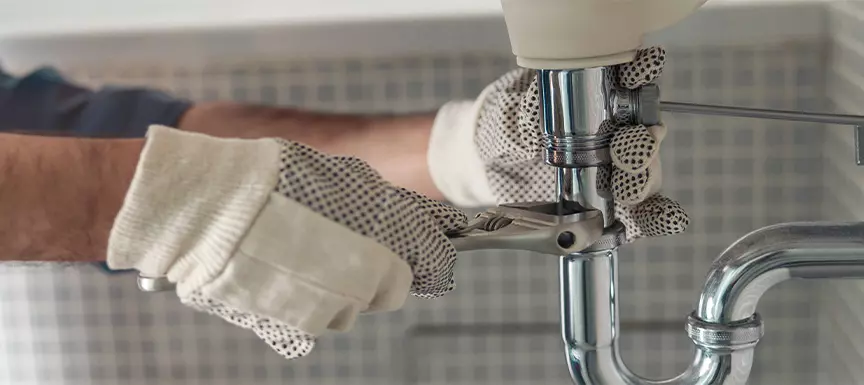 Thorough Maintenance of Plumbing
Thorough Maintenance of Plumbing
Maintenance of your home can save you a lot of time and money. It is ideal to have your plumbing thoroughly maintained to ensure that the plumbing does not become defective and become a gateway for water leakage in walls.
-
Ensuring that Appliances, Pipes, etc are Cleaned Properly
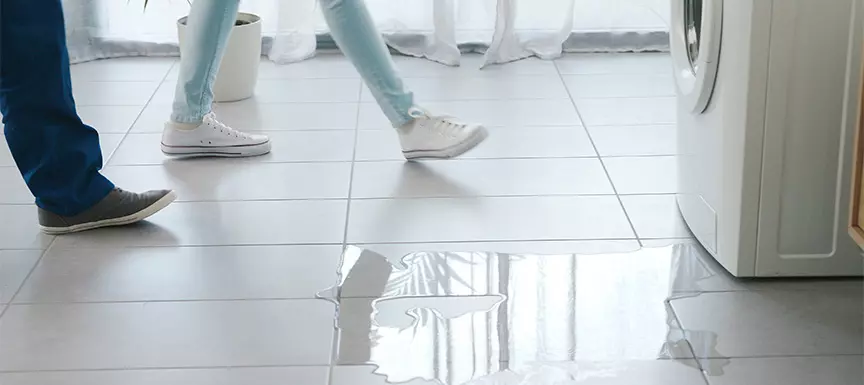 Ensuring that Appliances, Pipes, etc are Cleaned Properly
Ensuring that Appliances, Pipes, etc are Cleaned Properly
The appliances that use water are required to be used very carefully and kept clean so as to not damage them and cause wear and tear which will lead into wall leakage.
-
Ensure Proper Ventilation
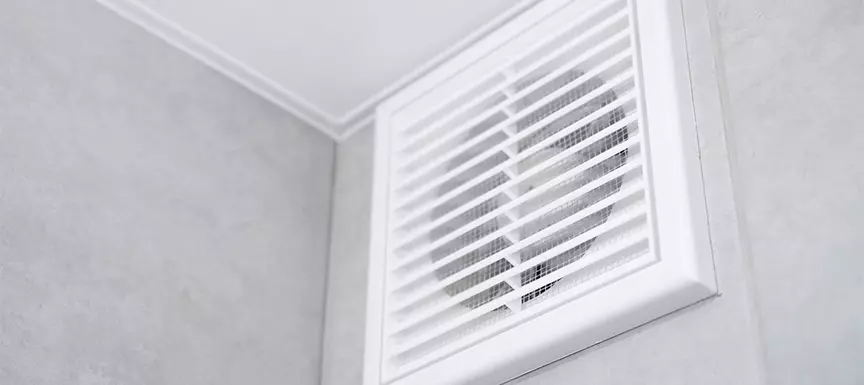 Ensure Proper Ventilation
Ensure Proper Ventilation
Ventilation is essential to prevent water leakage. If avoided, moisture can set in and start to gradually create the cracks that will act as roads for the water seepage to slowly damage your property. It is necessary to keep your space dry and well aired out so as to avoid the settlement of moisture.
-
Using High-Quality, Water-Resistant Paints and Plasters
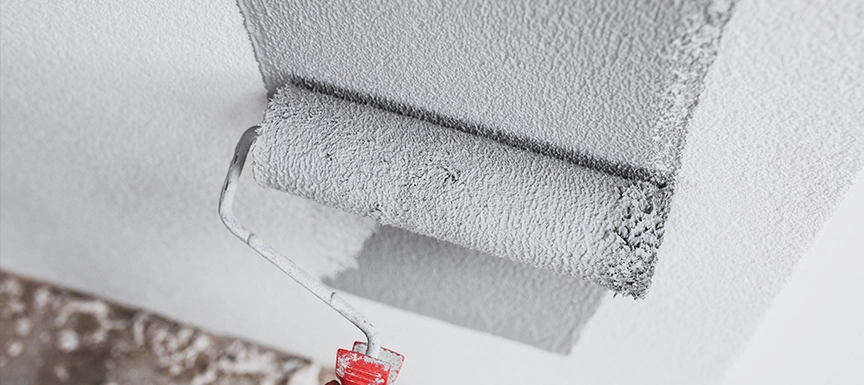 Using High-Quality, Water-Resistant Paints and Plasters
Using High-Quality, Water-Resistant Paints and Plasters
High-quality water-resistant paints and plasters are designed to endure the moisture, condensation and humidity in homes and can easily ward off the problem of water leakage in walls and keep your property water damage free.
This blog was curated with the purpose of acting as a water leakage detector and water leakage solution guide to ensure that homeowners are well educated about the severity of water leakage in walls and the precautions that can be taken to avoid it and the damage that comes with it. Curated by our experts, this blog dives into various details about water leakage, the damages it can cause, the precautions one can take and the process of repair so homeowners can be aware and informed about the problems in their homes.

































